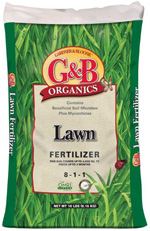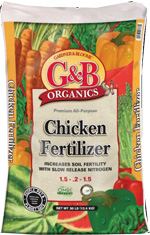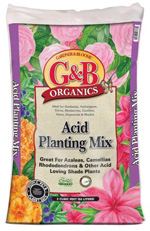|

     
|
 |
Featured Quote: "I am writing in the garden. To write as one should of a garden one must write not outside it or merely somewhere near it, but in the garden." |
 |
 |
 |

|
Gardeners who have learned the glories of picking fresh fruit from their own orchards eagerly await the bare root season to take their list of desired trees to the local nursery. Your first look at the bare root fruit tree that you envision bearing baskets of fresh sweet fruit may be a bit of a disappointment; it won't win a beauty contest. But there is a bonus to buying bareroot. As those smart gardeners know, you get great fruit trees at a price considerably less than a containerized tree. Unlike evergreen trees, deciduous trees go through a dormant phase during which they lose all their leaves. Whether you're choosing plum, nectarine, pear, peach, pomegranate, persimmon, cherry or quince trees, the safest time to dig these young ones from the field for transportation to the nursery sans soil on their roots, is when they are in a state of dormancy, hence the term "bareroot." True gardeners have learned patience. They will choose the smaller specimens, as the larger the tree the more out of balance will be the root to stem ratio. And while it may be momentarily painful, top that first year bareroot off at 2 to 3 feet in height, with no side branches remaining. Doing this means that the scaffold, which is the lower side supporting structural branches, will be lower to the ground, making harvesting and pruning less of a chore. And while we're on pruning, peaches and nectarines will need to be heavily pruned each dormant season; apples, pears, almonds, plums, persimmon and apricots, once they are established, will only require moderate pruning. Unless the trees are in paper pots, it's wisest to ready the planting holes for your trees prior to going to the nursery, so that you can get them into the ground the same day. As with most plants and trees, they like loose soil with good drainage, and sunny locations. If your soil conditions are less than perfect, but the location you've chosen is, why not plant your new additions in a raised bed? This allows you to completely control the soil into which you are placing the trees. Group trees that have similar spraying needs, and those varieties of fruit trees that require pollinators. Bees and the wind will assist you with this, so how lucky if your neighbors have cultivars that are needed for pollination of your trees! Your planting holes should be wide rather than deep. A depth the length of the rootstock, or approximately 1.5 feet, should suffice. Put your hands into the earth and form a slight mound. Place your tree on the mound, gently spreading out the roots so that they aren't encircling the tree. Use the native soil, or a mixture if you need to amend, to fill in the hole, and don't fertilize until you see growth on the tree. Once planted, mulch the area around the tree. For the first two years, dilute the fertilizer by half so that young roots do not get burned. It will take a couple of years before your bareroot fruit tree actually bears fruit, but what a relatively short wait for the satisfaction of knowing that you were a part of the growth process nearly from the beginning. And imagine how sweet that first bite of fruit will taste! |
 |
|
If you are looking for the perfect flower to bridge the gap between winter and summer, consider the primrose. Like a ray of sunshine on a damp and gloomy day, primroses (primula) provide early spring blooms in almost every color of the rainbow. They prefer cool temperatures and moist, rich, well-draining soil (with lots of compost). Primroses can tolerate full sun in spring but definitely prefer afternoon shade once temperatures get warmer. They can easily be grown indoors during winter, provided that you maintain cool night temperatures in your home (below 65 degrees), filtered sun and moist soil. The most popular types of primroses include English primroses (Primula vulgaris/polyanthus), Fairy primroses (Primula malacoides) and German primroses (Primula obconica). All are heavy bloomers and well suited for garden planting or in containers. Originally from England, most English primroses now are grown along the Pacific Coast. They produce large clusters of flowers above the foliage, with dwarf varieties just a few inches above the foliage and taller hybrids growing up to one foot above the foliage. They are available in almost every color shade. German primroses are often called perennial primroses, since they can often come back to re-bloom the following season. They have larger rounded leaves, and grow up to 12 inches high, with taller flower stalks. The flowers come mostly in shades of red, rose and salmon. Fairy primroses have a more delicate look, with smaller leaves and flower clusters on 6-12" stalks above the foliage. They generally are available in color shades of pink, lavender and white. So if the winter blues are getting you down, chase them away with some perfect primroses! |
 |
|
As homes continue to be built larger and garden space becomes smaller, fewer homeowners have the space to plant as many fruit trees. But that doesn't mean you have to go without the fresh taste of homegrown fruit. All you have to do is incorporate the principles of Backyard Orchard Culture. The objective behind this gardening concept is to allow for a prolonged harvest of tree-ripe fruit from a small space. This can be accomplished by planting multi-grafted fruit trees, planting two or more trees with different ripening dates in the same hole, or by espaliering fruit trees along a sunny house wall or fence line. By using multi-graft trees or planting more trees in one hole, a homeowner can now extend a 3-4 week harvest season into 10-12 weeks of different flavors. Planting or creating espaliers along a fence line can also free up valuable garden space for more fruit trees or other ornamental plants. Close planting also offers the additional benefit of restricting a tree's vigor, because it has to compete for root space and sunlight with other nearby trees. More of the tree's energy will go towards producing fruit instead of sending out new growth. Close planting also can create an environment for better cross-pollination, which also leads to increased fruit production. Most types of fruit trees need to be pruned each year to stimulate new fruiting wood, remove dead and diseased branches, or to allow more sunlight between the branches to help fruit ripen better and more evenly. If you start pruning consistently when your trees are young, it will be much easier to keep the tree at a manageable or desirable height. At the heart of Backyard Orchard Culture is the concept of summer pruning. By pruning at the same time you are thinning your crops, you will be better able to distinguish the kind of wood on which the tree sets fruit. You won't accidentally prune off any fruit because you can see it, and the new growth is always above or beyond the fruit. Reducing the size of the tree canopy will in turn reduce the photosynthesis (food manufacture) of the tree. This helps to limit the amount of food materials and energy available for the roots to store, which in turn will control the tree's capability to produce as much new growth the rest of summer or the following spring. Pruning for size control in the summer will reduce your pruning chores in winter. Once the leaves fall off, you will have a better opportunity to prune for branch spacing and overall shaping of your trees. To create an espalier tree, simply prune off anything that doesn't grow flat. Then selectively thin and train what's left to space the fruiting wood. You can espalier most fruit trees, but apples and pears lend themselves to this type of pruning better than other varieties. Smaller fruit trees can be much more manageable to spray, prune, and harvest than large trees. So, take a new look at your garden and you might be surprised at the possibilities you have for growing fruit trees. Then close your eyes and think about how great the fruit from those trees will taste! |
 |
|
If you are a berry lover, you can't possibly have a garden without dedicating a space to grow delicious homegrown strawberries. Some people even go as far as saying they are the best of all the berries. What is unique about the strawberry (actually a member of the rose family) is that it is the only fruit with seeds on the outside rather than the inside. The delicate but great-tasting heart-shaped berry has always been associated with love, passion, purity, and healing. Legend has it that if you break a double strawberry in half and share it with a member of the opposite sex, you will fall in love with each other. And speaking of legends and folklore, locals in some parts of Bavaria still practice the annual rite--each spring--of tying small baskets of wild strawberries to the horns of their cattle as an offering to the elves. They believe that the elves, (who are known to be passionately fond of strawberries--what good taste they have), will help to produce healthy calves and an abundance of milk in return. Strawberries are also prized for their medicinal purposes and health attributes. Ounce for ounce, strawberries have more Vitamin C than citrus fruit and have been associated with lowering cholesterol, easing symptoms of gout and digestion problems and lowering the risk of certain types of cancer. Strawberries are generally divided into three groups: spring-bearing, everbearing, and day-neutral. The fruits of day-neutral plants and everbearers are usually smaller than the fruits of the spring-bearers. Spring-bearing strawberries generally produce a crop during a 2-4 week period in the spring. Ever-bearing strawberries produce three periods of flowers and fruit during the spring, summer, and fall--while day neutral strawberries will produce fruit throughout the growing season. Strawberries prefer the sun but do tolerate some shade. They can be used as an edging plant or a groundcover. Their major requirement is good drainage, so they'll benefit from being planted in mounded soil, terraced beds, barrels or other types of containers. They can be grown indoors, even, in a sunny window or with supplemental lighting, which makes them a great candidate for starting indoors in cold areas. We invite you to discover the sensational flavor of homegrown strawberries! Strawberry Planting and Care Instructions Placing plastic sheeting underneath the foliage will help keep the soil warm and weed-free. It also deters slugs, snails and other crawling insects from feeding on foliage and berries. Water bedding plants using drip irrigation or by flooding trenches between the mounds or terraces. Water plants in containers under the leaves. Keep them healthy during the fruiting season by feeding with a fertilizer that is low in nitrogen and will promote more bud growth and fruit. |
 |
|
How do I know if I have poor drainage? Answer: First, your plants won't look happy. (Surprise!) The foliage will look dull and lack the luster and intense color of a healthy plant. If it is a blooming plant, it may produce few blooms or none at all. When the condition becomes severe, the plant will drop its leaves from the interior first, eventually working its way to the leaf tips. The second sure sign is if you are not watering much but the ground stays continually wet, or even has moss or algae growing on it. The soil may also have an odor. What is important to remember is that every time plants are watered, the soil temperature is lowered by up to twenty degrees. Most plants are stimulated to grow as the soil temperature warms up. If the soil is always wet, the soil temperature will be cooler than the plant desires and it won't grow much. Poorly draining soil also attracts bad bacteria that can attack the root system, in addition to providing less oxygen for the plant. If you think you have bad drainage, gently lift the plant out of the ground with a shovel--being careful not to damage roots. If the soil is wet at the bottom of the hole, dig it deeper and back-fill with at least six inches of gravel. Then build a mound that will raise the plant 3-6 inches higher than the surrounding soil level and re-plant so that the top of the root ball is level with the top of the mound. If that doesn't work, you may need to find a different location for the plant. |

 click here for a printer friendly version of this page
click here for a printer friendly version of this page
 |
Written content © Garden Partners LLC, or respective authors. All Rights Reserved. Privacy Policy. All written content contained in this site is protected by United States copyright law and may not be reproduced, distributed, transmitted, displayed, published, or broadcast without prior written permission of Garden Partners, LLC. You may not alter or remove any trademark, copyright or other notice from copies of the content. |




